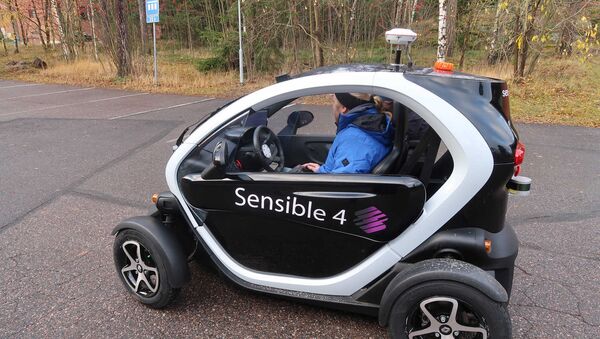The empty thoroughfares of cold and sparsely populated Lapland are an ideal testing area for automated vehicles, thanks to easy routes posing a low accident risk and extra challenges in terms of harsh weather conditions.
Should the experiment by Sensible 4 prove a success, driverless buses will become a mainstay in Lapland's traffic, the Aamulehti newspaper reported.
"If the technology works here, it'll work anywhere," Harri Santamala of the robotics firm Sensible 4 said, venturing that his automobiles handle climate challenges better than the competition.
Smartroad established at Nummela. Sharpeye beacons and Sensible 4 #Juto autonomous car. #uwb #aurora #älytie #ArcticChallenge #Nummela pic.twitter.com/DwgQZl4Oqx
— Sharpeye Systems (@SharpeyeSystems) November 29, 2017
The first tests are being held in Muonio municipality, near the border with Sweden. Currently, the company is gathering information about the public using a special vehicle. So far, it cannot cope without human supervision, but it will be replaced by a fully automated peer in the near future. Previously, however, the firm's driverless vehicle Juto managed a successful test run on a closed track.
UWB verkko taas toimii Muoniossa. #juto testaa. Uusi liikennemerkin lisäkilpi. #snowtomous pic.twitter.com/4xix6ZWi4g
— Sharpeye Systems (@SharpeyeSystems) December 12, 2017
Road sign: "Robotic cars in traffic"
According to Santamala, Juto's very name ("reindeer") is a nod towards its sturdiness. He compared its navigation mechanism to how a reindeer breeder returns home in severe frost and blizzard.
"The reindeer-breeder pulls on the hat and the hood, takes the reins, and the deer takes him home, as if automatically," Santamala explained to the Finnish trade newspaper Insinööri-Lehti.
#juto the autonomous test car & #aurora devl crew @sensible4ltd @ReijaViinanen visited @HarrinivaHS today, #santa came to check out newest trends in #transport as well 😉 pic.twitter.com/GtikOiUV1A
— Niina Pietikäinen (@NiinaNinja) December 11, 2017
Juto is based on a Renault Twizy equipped with actuators and sensors fully controlled by computer. The tiny vehicle is furnished with six cameras, including a thermal camera to assist the course plotting by detecting objects in all directions. The vehicle maintains a navigation precision of 5 centimeters, provided there is satellite visibility.
#UWB data logging on action at aurora smartroad. #snowtomous #juto. pic.twitter.com/UFALbcuNwo
— Sharpeye Systems (@SharpeyeSystems) December 12, 2017
According to Sensible 4's press-release, the company aims to convert Finland into a "hotbed of shared autonomous mobility," not least by collaborating with "Public-Private-People partners." At present, driverless tests are scheduled in the cities of Vantaa, Espoo and Hämeenlinna.
#Helsinki-based #sensible4 turns #Finland's bad #weather into a global competitive advantage in #AutonomousVehicles. #Slush17 #SlushYmobility pic.twitter.com/TyuX1WCqIJ
— Tommi Laitio (@tommilaitio) December 1, 2017
By Santamala's own admission, the company is already looking to identify potential foreign expansion after conquering its home turf. China and Asia in general are the big ones, he noted.
Finland's first driverless bus was launched in Helsinki in 2016. Helsinki Vice Mayor Pekka Sauri, who is responsible for the city's public transport, became the first passenger. Ironically, Sauri is known as being skeptical about the introduction of robotic buses. According to Sauri, they are unlikely to replace traditional manned buses, but can be used as a supplement to the city's public transportation system.


